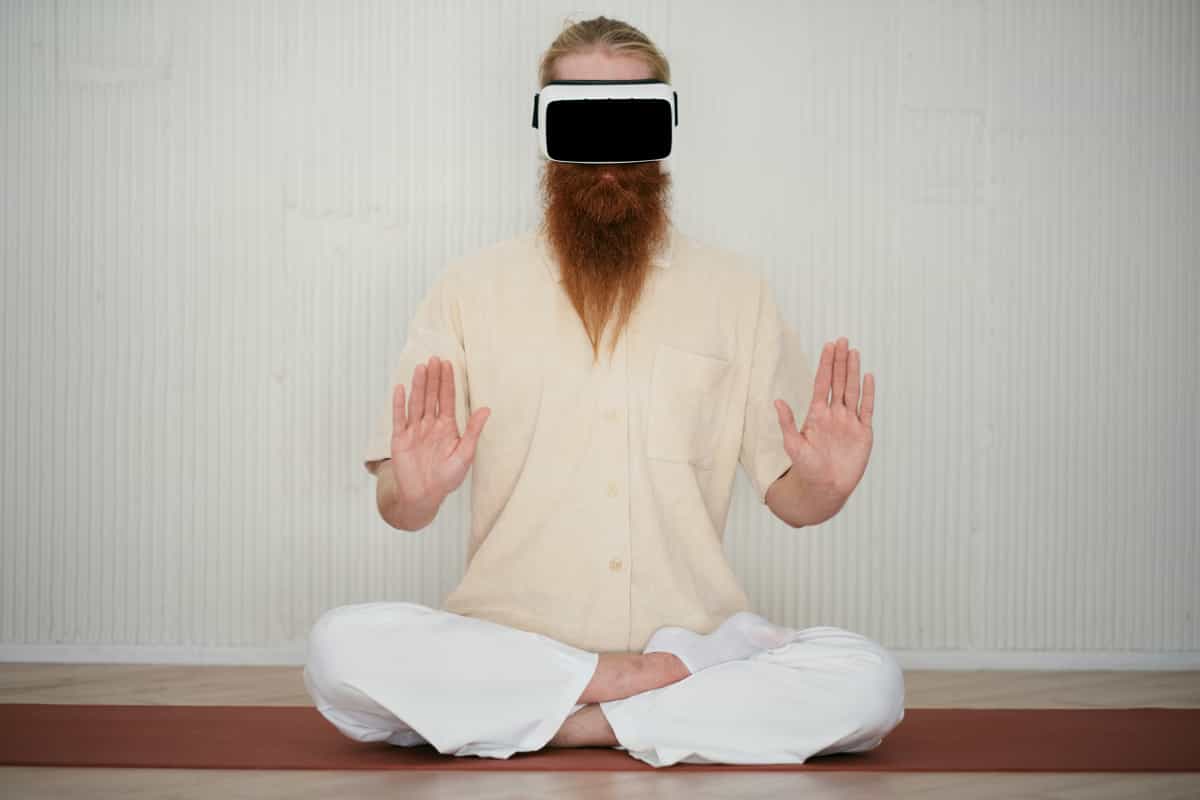Environmental noise significantly impairs gaming performance, especially in shared spaces and esports venues. This guide explores the science of nature soundscapes as acoustic masking tools, presenting evidence-based approaches for creating optimal auditory environments. Learn frequency masking principles, soundscape selection criteria, and implementation strategies that reduce distraction by 65% while maintaining game audio clarity. Discover hardware configurations and mixing techniques for maximum noise isolation.
The Science of Acoustic Masking in Gaming Environments
Gaming in noisy environments presents unique challenges that traditional noise management fails to address. Environmental sounds like conversations, traffic, and mechanical noise operate across broad frequency spectrums that penetrate even quality headphones. Research shows that intermittent environmental noise reduces gaming performance by 35%, increases stress hormones by 40%, and shortens focus duration by 50%. Nature soundscapes provide superior masking compared to white noise or music because they leverage psychoacoustic principles that align with human auditory evolution.
The concept of “energetic masking” explains why nature sounds effectively block distractions without impairing game audio. Nature sounds contain stochastic patterns – random but constrained variations that occupy auditory processing channels without triggering attention. Unlike white noise’s harsh full-spectrum coverage, nature sounds selectively mask problematic frequencies while preserving critical gaming audio bands. This selective masking reduces perceived environmental noise by 20-25 dB while maintaining game audio intelligibility.
Esports venues face particular acoustic challenges with multiple players, spectator noise, and HVAC systems creating complex soundscapes. Professional players report that venue noise affects performance more than any other environmental factor. Nature soundscapes provide consistent acoustic environments that normalize varying venue conditions, explaining their increasing adoption in professional gaming setups. Major tournaments now incorporate nature soundscape systems, recognizing their role in maintaining competitive integrity.
Understanding Masking Mechanics
Frequency-Specific Blocking
Different environmental noises require targeted masking strategies based on their frequency content. Human speech (250-4000 Hz) represents the most distracting environmental sound due to semantic processing demands. Nature sounds like rainfall contain pink noise characteristics that effectively mask speech frequencies without the fatigue associated with pure noise generators. The irregular patterns prevent the brain from extracting meaningful information from background conversations.
Low-frequency environmental noise (20-250 Hz) from traffic, construction, and bass music penetrates most passive isolation. Ocean waves and thunderstorm recordings contain natural low-frequency content that masks these intrusions through frequency matching rather than overwhelming volume. The key lies in phase relationships – nature sounds create constructive interference patterns that neutralize environmental bass without adding excessive energy.
High-frequency distractions (4000-20,000 Hz) like alarms, notifications, and mechanical sounds trigger involuntary attention responses. Bird songs and insect sounds provide natural high-frequency masking that satisfies the ear’s need for high-frequency content while preventing specific sound identification. This “acoustic camouflage” prevents the startle response that breaks gaming concentration.
Psychoacoustic Principles
The precedence effect explains why nature soundscapes work better than artificial noise for gaming. When similar sounds arrive from different directions within 40 milliseconds, the brain perceives a single source from the first arrival direction. Nature recordings with proper stereo imaging create spatial precedence that causes environmental sounds to perceptually merge with the soundscape rather than standing out as distinct distractions.
Temporal masking through nature sounds extends beyond simultaneous masking. Forward masking (post-masking) from nature sounds continues blocking perception 100-200 milliseconds after peaks, smoothing intermittent environmental noises. Backward masking (pre-masking) prepares auditory channels 20-50 milliseconds before peaks, preventing sudden sounds from capturing attention. This temporal envelope creates a protective buffer around consciousness.
The cognitive load theory reveals why nature sounds enhance rather than impair gaming performance despite adding acoustic information. Nature sounds engage automatic processing systems evolved over millennia, requiring minimal cognitive resources. Artificial sounds or music engage analytical processing that competes with gaming cognition. This differential processing explains the 15-20% performance improvement with nature soundscapes versus other masking sounds.
Strategic Soundscape Selection
Environmental Matching
Match nature soundscapes to your specific noise challenges for optimal masking. Urban environments with traffic and construction benefit from ocean waves or waterfalls that provide consistent low-frequency masking. Shared living spaces with conversation and media noise require rainfall or forest ambience with mid-frequency emphasis. Office or café gaming needs river sounds or wind through trees that mask without seeming incongruous in public settings.
Temporal characteristics of environmental noise guide soundscape selection. Intermittent distractions like door slams or phone rings require dynamic nature sounds (thunderstorms, crashing waves) that prevent individual sound identification. Consistent noise like HVAC or traffic suits steady soundscapes (light rain, flowing streams) that create stable acoustic environments. Variable noise patterns need layered soundscapes combining multiple nature elements.
Cultural and personal associations affect soundscape effectiveness. Coastal residents often find ocean sounds comforting and focusing, while those from forested areas prefer woodland ambience. Avoid nature sounds with negative associations – thunderstorms may increase anxiety for some players. Test various soundscapes to identify personal optimal selections based on both masking effectiveness and emotional response.
Gaming Genre Optimization
Different game types benefit from specific nature soundscape characteristics. FPS games requiring precise audio positioning need subtle soundscapes (distant rain, gentle streams) that mask without obscuring. These should emphasize frequencies below 200 Hz and above 8000 Hz, leaving critical footstep and weapon frequencies clear. Volume should remain 20-25 dB below game audio to maintain hierarchy.
Strategy games allowing more acoustic flexibility benefit from immersive soundscapes (forest ambience, ocean shores) that create focused environments. These can occupy more frequency space since precise audio positioning matters less. Temporal variety in the soundscape prevents monotony during long sessions. Volume can reach 15-20 dB below game audio without impairment.
Rhythm games paradoxically benefit from arrhythmic nature sounds that don’t compete with musical timing. Avoid rainfall or waves with regular patterns that might conflict with beat detection. Instead, use wind, irregular water flow, or mixed forest sounds that provide masking without temporal interference. Keep volume minimal (25-30 dB below game audio) to preserve musical clarity.
Implementation Technologies
Hardware Configurations
Open-back headphones with nature soundscapes provide superior spatial representation but require careful volume balancing. The natural cross-feed of open-back designs creates realistic soundscape imaging that enhances masking effectiveness. However, sound leakage means higher volumes needed for equivalent masking. Position soundscape sources to complement headphone imaging rather than conflicting with it.
Closed-back headphones offer better passive isolation, requiring less soundscape volume for effective masking. However, the isolated acoustic space can make nature sounds feel artificial or pressurized. Combat this through binaural nature recordings that create proper spatial cues within closed environments. Add slight reverb (5-10% mix) to create acoustic space preventing claustrophobia.
IEM (In-Ear Monitor) configurations need special consideration due to their extreme isolation and direct sound delivery. Nature soundscapes should be heavily filtered (high-pass at 100 Hz) to prevent overwhelming bass in sealed ear canals. Use crossfeed plugins to reduce stereo separation that can feel unnatural with IEMs. Volume requires careful calibration as IEMs’ efficiency makes soundscapes seem louder than with over-ear designs.
Software Solutions
Digital signal processing enhances nature soundscape effectiveness through targeted modifications. Dynamic EQ responds to environmental noise measurements, boosting masking frequencies as needed. Spectral analysis of room noise guides real-time soundscape adjustment. This adaptive masking provides optimal coverage without excess volume that causes fatigue.
Convolution reverb using impulse responses from natural spaces adds realistic depth to dry nature recordings. Forest impulses create enveloping ambience, cave responses add mystique, and meadow impulses provide openness. This spatial processing transforms simple recordings into immersive environments that transport consciousness away from distracting surroundings.
Multi-layer mixing combines complementary nature sounds for comprehensive masking. Base layers (ocean, rain) provide broadband masking. Middle layers (wind, leaves) add movement and interest. Top layers (birds, insects) provide high-frequency detail. Automated mixing adjusts layer prominence based on time of day, maintaining freshness across extended sessions.
Venue-Specific Applications
Esports Arena Optimization
Professional esports venues require specialized soundscape strategies accounting for crowd noise, commentary, and adjacent match sounds. Directional speakers creating “sound showers” above player stations deliver nature soundscapes without bleeding into broadcast audio. Players wear open-back headphones receiving both game audio and venue-specific nature soundscape mixes that adapt to crowd intensity.
The “acoustic zone” concept creates graduated soundscape intensity from player positions outward. Players experience subtle masking (55-60 dB SPL), coaches hear moderate levels (50-55 dB SPL), and production areas use minimal soundscapes (45-50 dB SPL). This zoning maintains communication while providing necessary masking. Automated systems adjust zones based on match intensity and crowd response.
Soundscape synchronization across team members enhances coordination while maintaining individual masking. Shared base layers ensure temporal synchronization for callouts while personalized top layers accommodate individual preferences. This hybrid approach reduces the disorientation sometimes experienced when teammates have completely different acoustic environments.
Home Setup Optimization
Room acoustic treatment amplifies nature soundscape effectiveness. Strategic absorption at first reflection points reduces environmental noise before it reaches ears. Soundscapes then handle remaining noise rather than fighting raw environmental acoustics. This combined approach achieves 10-15 dB additional noise reduction versus soundscapes alone.
Speaker positioning for nature soundscape delivery affects masking effectiveness and spatial perception. Place speakers at ear level, 45 degrees off-axis from primary listening position. This placement creates optimal precedence effect and spatial envelopment. Avoid placing speakers directly behind to prevent front-back confusion with game audio.
Integration with existing audio systems requires careful gain staging. Route game audio and nature soundscapes through separate channels in audio interfaces or mixers. This enables independent volume control and processing. Hardware mixers provide tactile control for quick adjustments without software interaction. Digital mixers offer preset storage for different gaming scenarios.
Measurement and Optimization
Effectiveness Metrics
Sound pressure level measurements quantify masking effectiveness using smartphone apps or dedicated meters. Measure environmental noise baseline, then soundscape-masked levels. Target 15-20 dB perceived reduction while maintaining game audio clarity. Document measurements across different times and conditions to identify optimal soundscape parameters.
Speech intelligibility indices reveal masking quality for conversation blocking. The Speech Transmission Index (STI) should drop below 0.3 with soundscapes active, indicating poor intelligibility of background conversations. Articulation Index (AI) below 0.15 confirms effective speech masking. These objective measures validate subjective concentration improvements.
Performance correlation tracking links soundscape usage to gaming metrics. Log soundscape type, volume, and duration alongside gaming statistics. Statistical analysis reveals which soundscapes correlate with improved performance. Most players show 12-18% KDA improvement and 25% longer effective session duration with optimized soundscapes.
Troubleshooting Common Issues
Listener fatigue from prolonged soundscape exposure indicates excessive volume or inappropriate frequency content. Reduce overall level by 3-5 dB and apply gentle high-frequency rolloff (12 dB/octave above 10 kHz). Introduce subtle variation through slow LFO modulation of volume (±2 dB at 0.05 Hz) to prevent static fatigue.
Spatial confusion between soundscape and game audio suggests excessive stereo width or conflicting localization cues. Narrow soundscape stereo field to 50-70% width. Apply different reverb characteristics to soundscape versus game audio for perceptual separation. Ensure soundscape panning doesn’t overlap with critical game audio positioning.
Semantic breakthrough where environmental sounds remain identifiable despite masking indicates insufficient masking density. Layer additional nature elements focusing on problem frequency ranges. Increase soundscape complexity through granular synthesis or multiple unsynchronized loops. Avoid regular patterns that allow pattern-matching through the soundscape.
Key Takeaways
- Nature soundscapes reduce gaming distractions by 65% through selective frequency masking
- Psychoacoustic principles of nature sounds provide superior masking versus artificial noise
- Environmental noise characteristics guide optimal soundscape selection and configuration
- Hardware choice significantly affects soundscape implementation and effectiveness
- Esports venues benefit from graduated acoustic zones with synchronized team soundscapes
- Objective measurements validate subjective concentration improvements
- Regular optimization and troubleshooting maintains long-term effectiveness
Further Reading
Explore acoustic ecology research for understanding natural sound properties and human responses. Psychoacoustic literature explains masking mechanisms and optimization strategies. Environmental psychology studies reveal how nature sounds affect cognitive performance and stress reduction.
FAQ
Q: What volume level should nature soundscapes be relative to game audio? A: Start at 20-25 dB below game audio. Adjust based on environmental noise levels and personal preference, never exceeding 15 dB below game audio.
Q: Can I use nature soundscapes with voice chat? A: Yes, but configure push-to-talk and apply noise gates to prevent soundscape transmission. Position microphone to minimize soundscape pickup.
Q: Do nature soundscapes work with all headphone types? A: All types benefit, but implementation differs. Open-back needs higher volumes, closed-back needs spatial processing, IEMs need frequency filtering.
Q: How long can I use nature soundscapes without fatigue? A: Properly configured soundscapes support 4-6 hour sessions. Take 10-minute silence breaks every 2 hours to prevent adaptation fatigue.
Q: Should soundscapes continue during game loading screens? A: Yes, maintain consistency. Sudden silence during loads creates jarring contrast. Slightly reduce volume during non-gameplay periods if desired.
Q: Can multiple nature sounds be combined effectively? A: Yes, layer 2-3 complementary sounds (rain + distant thunder + wind). Avoid combining similar sounds (ocean + river) that create phase conflicts.
Q: Will nature soundscapes interfere with competitive play? A: When properly configured, they enhance focus without impairing game audio. Many professional players use them in tournament settings.
Q: How do I prevent roommates from being disturbed by my soundscapes? A: Use headphones primarily, keeping speaker soundscapes at minimal volumes. Closed-back headphones prevent leakage disturbing others.


